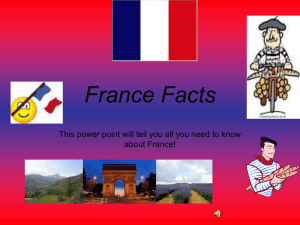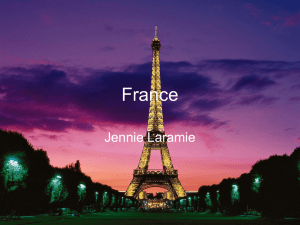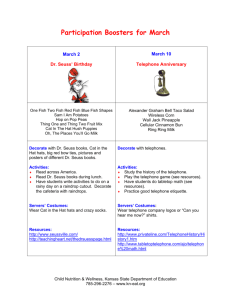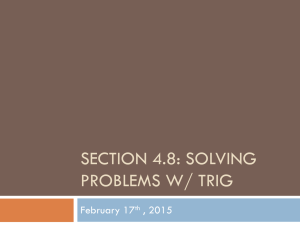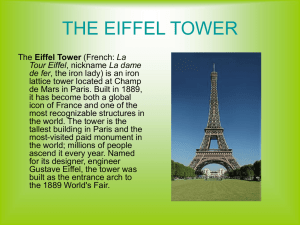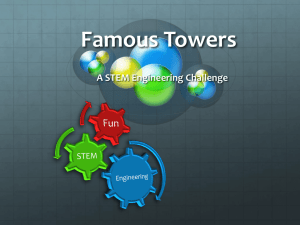1.0 Eiffel Tower vs Femur
advertisement
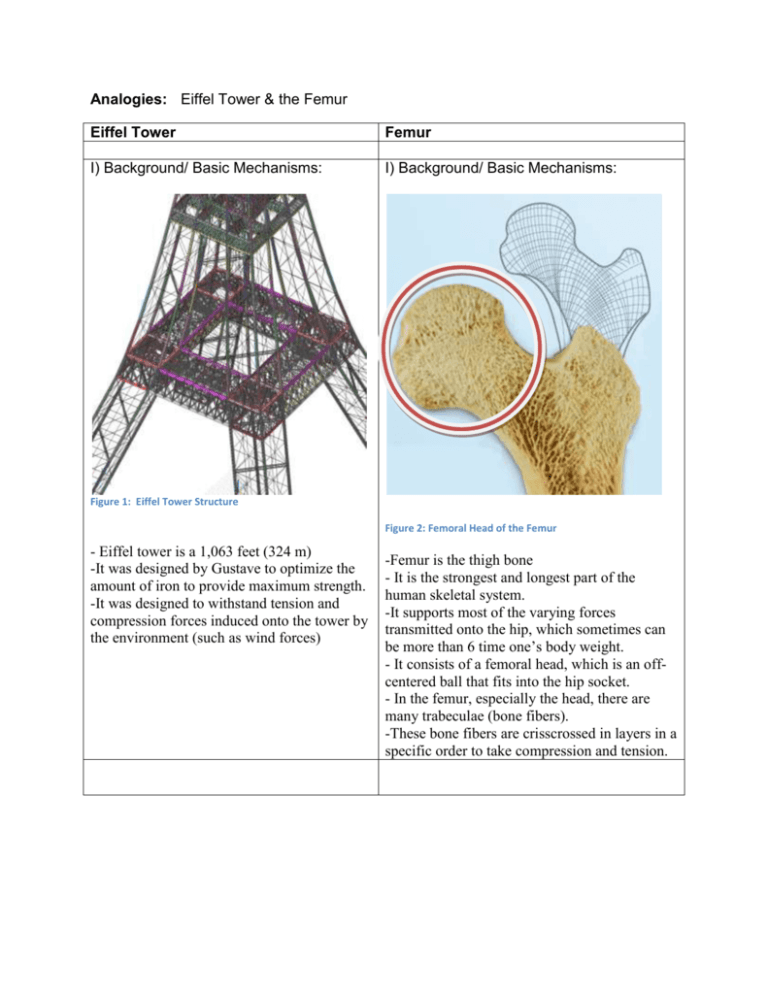
Analogies: Eiffel Tower & the Femur Eiffel Tower Femur I) Background/ Basic Mechanisms: I) Background/ Basic Mechanisms: Figure 1: Eiffel Tower Structure Figure 2: Femoral Head of the Femur - Eiffel tower is a 1,063 feet (324 m) -It was designed by Gustave to optimize the amount of iron to provide maximum strength. -It was designed to withstand tension and compression forces induced onto the tower by the environment (such as wind forces) -Femur is the thigh bone - It is the strongest and longest part of the human skeletal system. -It supports most of the varying forces transmitted onto the hip, which sometimes can be more than 6 time one’s body weight. - It consists of a femoral head, which is an offcentered ball that fits into the hip socket. - In the femur, especially the head, there are many trabeculae (bone fibers). -These bone fibers are crisscrossed in layers in a specific order to take compression and tension. II) Similarities -Both are intricate designs that are able to support maximal amounts of forces using little amounts of materials. -Both have structures and support systems according to its varying load: (Struts and braces in the Eiffel Tower; Trabeculae in the femur) - Materials in the structures, both, crisscrossed and have different layers. Figure 3: Struts and Bases of the Eiffel Figure 4: Trabeculae in the Femur - In figure 5, the Femoral head can be seen as a bunch of inverted Eiffel Towers lined up around its cortical bone. Hence, we can see that the mechanical properties are similar. Figure 5:Comparison between the Femoral head and the Eiffel Tower III) Possible Design Concepts -The Designed concepts from these analogies are… (Conservation of materials, and the Strength of Structures) -Below are trabeculae inspired building design examples: Figure 6: The meshwork in the trabeculae towers is able to support buildings while providing an adequate amount of space ratio. Figure 6: Trabeculae tower Analogical Reasoning: Premise#1 The Eiffel tower was built using struts and braces to withstand the tension and compression caused by the environment (ex. Wind forces). Premise#2 The femur can support a great amount of tension and compression forces by its trabeculae. ______________________________________________________________________ Conclusion Since the femur and the Eiffel tower are capable of withstanding great amounts of compression and tension, struts and braces are like the trabeculae; hence, the structure of the Eiffel Tower and the Femur are analogous. Main Websites: http://www.discoveryofdesign.com/id13.html http://www.answersingenesis.org/articles/am/v4/n4/architects Corresponding Websites: http://www.gla.ac.uk/ibls/US/fab/tutorial/generic/bone2.html http://education.yahoo.com/reference/gray/subjects/subject/59 http://www.scia-online.com/eNews/en/eNewsOkt05_EN.html Design Concept Ideas: http://www.evolo.us/architecture/trabeculae-re-imagining-the-officebuilding/
